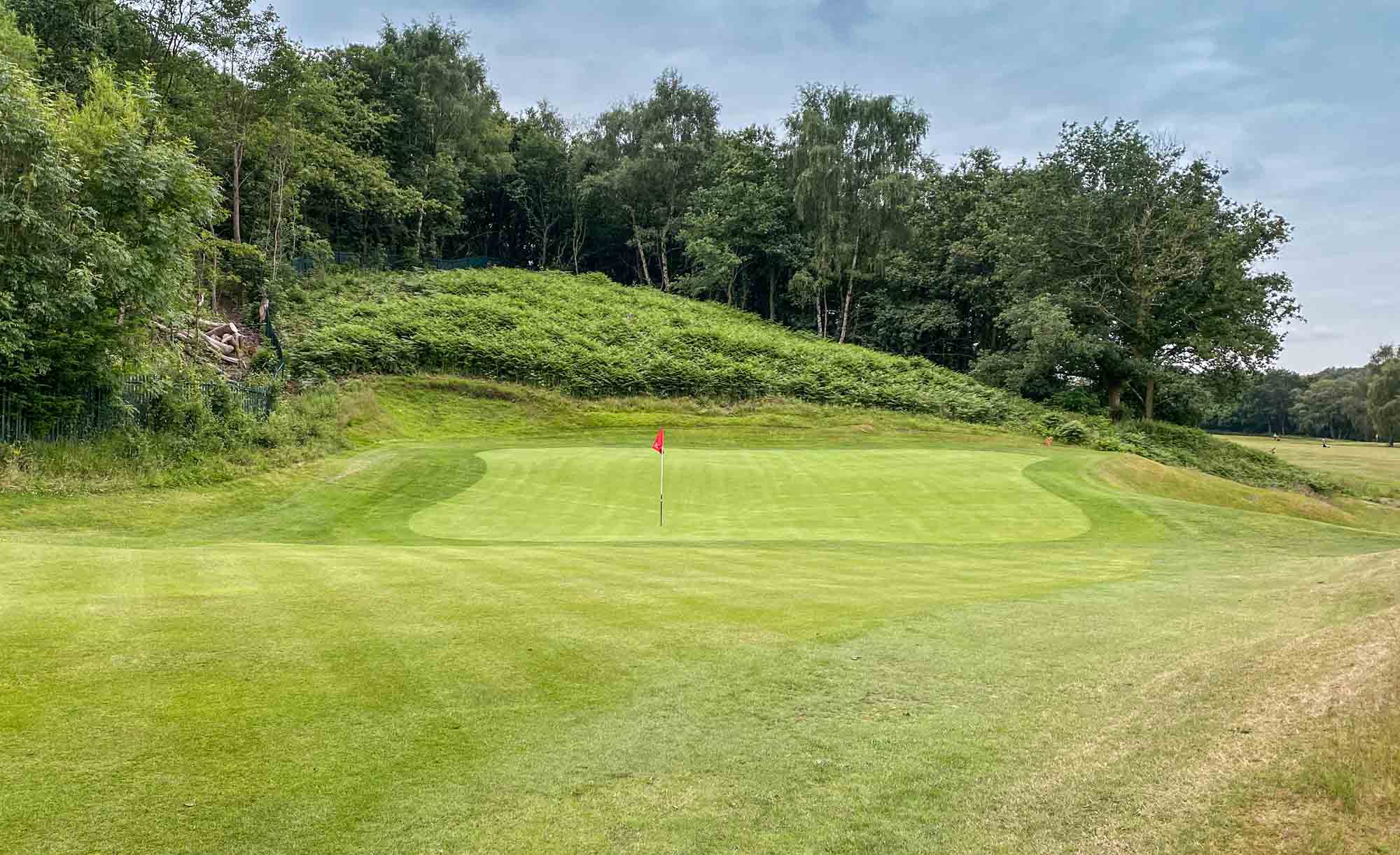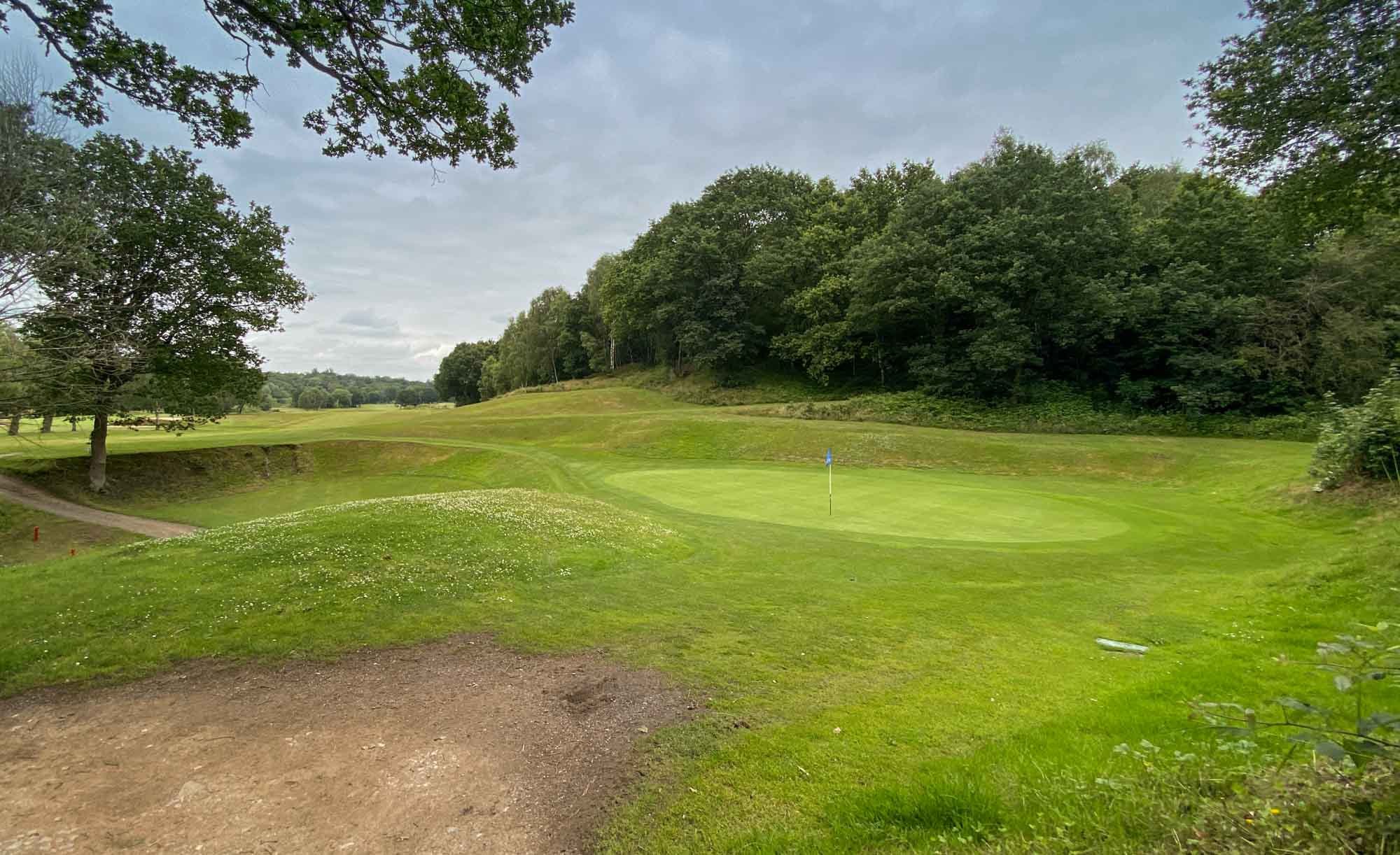Reddish Vale Golf Club

Overview
Reddish Vale Golf Club is the third oldest Alister MacKenzie original design and is almost as per his original design.
The scorecard registers only 6092 yards and a par of 69. Don't be put off - what the course lacks in distance is more than made up for in character.
17 of 18 green sites can be attributed to the good Doctor. 16 of the 18 holes are of Alister MacKenzie vintage. However, some greens have been rebuilt due to subsidence. Alister Mackenzie's work includes holes 1-13, 15, 17, and 18.
Golf Course Review
Reddish Vale Golf Club is an Alister MacKenzie design from 1912 in Stockport near Manchester, Cheshire, England. Laid out on 100 acres of undulating land, the River Tame weaves its way through the course.
Alister MacKenzie at Reddish Vale Golf Club
The first five holes make use of the high land near the clubhouse, the good Doctor managed to find two par 3's and three par 4's in just 15 acres.
At first glance, you could conclude there is simply one major landform that dominates play at Reddish Vale Golf Club - the river valley. After five compact holes on the high ground, the 6th hole plunges 100 ft down to the river before gaining it all back on the approach on the 18th... or so it would seem.
The routing on the valley floor is both compact and intricate. What may go unnoticed is the prominent shelf in the river valley. It is used as the right side of the 7th fairway and then used to create the blind tee shot on the 8th. It adds drama to both the tee shot and approach on the 11th. It makes the right miss penal on the 12th. Gives the unique green site on the 13th and elevated tee to the 14th. It is used in the same manner on the 15th as it is on the 8th and is again employed for the elevated tee shot on the 16th.
James Braid at Reddish Vale Golf Club
Two holes have been altered from the original layout at Reddish Vale Golf Club, the 14th, and 16th - both from James Braid. The 14th hole has stacked bunkers up the right-hand side that creates a layering effect along the inside of the left to right dogleg.
When James Braid added the par 4 16th, it was at the expense of Alister MacKenzie's 230 yard downhill par three 16th. The green site still exists and silent witnesses were still visible in the 1960's. An additional alternate hole of Alister MacKenzie's vintage could be made with careful clearing...
The 16th hole at Reddish Vale Golf Club is a cracker - making use of the triangular land formed by a switchback in the River Tame. The hole stands out as it incorporates a prominent feature that is largely unused for the entirety of the round...
James Braid's contribution at Reddish Vale Golf Club is small but is perhaps the best of the bunch.
Henry Cotton On RVGC
- "Those that dislike Reddish Vale Golf Club say that the walks between the rees are too long and the long, steep climb to the 18th green is bad... I consider the course's good points far outweigh the bad ones."
- "There are six one-shot holes - a finer six could hardly be imagined. The 9th being the worst and the fourth being the best."
- "This hole (Braid's 16th) is the best looking, most fair, and probably at the same time the most difficult hole I have ever played."
Reddish Vale & MacKenzie's 13 Principles
Alister MacKenzie would pen his book, Golf Architecture, in 1920 - just 8 years after his work at Reddish Vale Golf Club. Not much happened in the world of golf course architecture from 1914-1919 and one would have to think the good Doctor ruminated on his work at Alwoodley, Moortown, Sitwell Park, and Reddish Vale during those war years.
- There are some longer walks from hole to hole. A few to note are 5 to 6, 6 to 7, 10 to 11, and 16 to 17. The walk from 10 to 11 is a walk back and the walk from 16 to 17 is not his doing
- The River Tame is largely inconsequential. The 16th is the only hole which directly includes in the strategy of the hole and it is one of the best on the course... It is clear MacKenzie wanted the River to play a part in the strategy of the course. On many of the holes, the River is practically hidden and therefore the thrill of risk-reward has also been diminished.
- The tee shot on 8 and 15 are blind and may not be to the liking of the modern palette. However, this is period correct and expected. MacKenzie disliked blindness on approach shots but remained silent on blind tee shots.
- The uphill ninth and the uphill 18th are tough climbs... perhaps it was the 9th and 18th at Reddish Vale which motivated him to make point 4 - "...there should be no hill climbing"...? The 9th tee shot from the lowest tee could be pretty spectacular - Id love to see it as it was originally. The punchbowl greensite on 18 is also a work of art.
- Alister MacKenzie wanted to see alternative routes on his designs. The only way to achieve this aim is to have width. With narrowed playing corridors, tree plantings, and unmanaged woodlands this aspect has been eliminated on some holes. A good example is the 13th. Similar to the 12th at The Addington, it is currently a one-dimensional hole that could be one of the best on the course with the shot over the shoulder reintroduced.
- Alister MacKenzie was a fan of heroic carries. The use of the two ravines on the opening five, high holes is a great example of where he uses the ravines to influence play on all of them. Sadly, some of the carries have been lessened by the addition of landfill. The other heroic carries on the back nine are found on the approach to 11, the one-shot 12th, and the 14th tee shot (Henry Cotton ascribes this to James Braid). A more rugged look to the course would be most welcome!
- The modern game has had a detrimental effect on the first 5 holes. The opening tee shot is almost over the neighbour's gardens with nets and trees planted to offset the risk. Trees are used to protect golfers on the 10th, 11th, and 12th. I do wonder if a clear line of sight and respect for other golfers would actually diminish risk as opposed to reducing potential risk by adding blindness and ricochets?
- The removal of the trees (none of which are specimens) behind the 11th and 15th greens would be a great improvement. It may even be with the reduction of unmanaged 'woodlands' (self-seeders) heather may even make a resurgence!
- One wonders what could be with tree management and clever use of the natural yet rare feature of the river. Increased width here would increase strategy and challenge the mind of the golfer. For example, the left miss on the 7th and chasing the angle to the left of the fairway on 8. The carry over the broken ground on 9 Imagine the possible Cape tee shots on the 15th and 17th!
- Some bunkers have been lost or filled in, with other complexes having merged bunkers. The best example is probably the missing rear bunkers on 10. The original design is difficult to nail down but there would be some treasures to be uncovered.
Reddish Vale in Historical Context
The timing of Reddish Vale Golf Club is important to remember. This layout followed Alwoodley and Moortown and coincided with Sitwell Park. It was completed just prior to the Lido Competition in 1914 and 6 years before he would pen his book, Golf Architecture, and his 13 essential points for good golf. Although he worked with Harry Colt at Alwoodley, it was prior to his partnership with him that lasted from 1919 to 1923.
When you consider that Harry Colt was at the time at the height of his powers it wouldn't be fair to compare the two golf course architects on their overlapping work. Harry Colt was busy with Swinley Forest, St George's Hill, and Pine Valley and Alister MacKenzie was in Manchester at Reddish Vale Golf Club. It's early MacKenzie and as such, it is not polished nor world-class but the spark was there and can still be seen...
Reddish Vale Golf Club Review
Reddish Vale Golf Club - Videos

Featured Architect: MacKenzie, Alister
As taken from his book, Golf Architecture, Alister MacKenzie felt the following were essential: The course, where possible, should be arranged in two loops of nine holes. There should be a large proportion of good two-shot holes and at least four one-shot holes. There should be little walking between...









